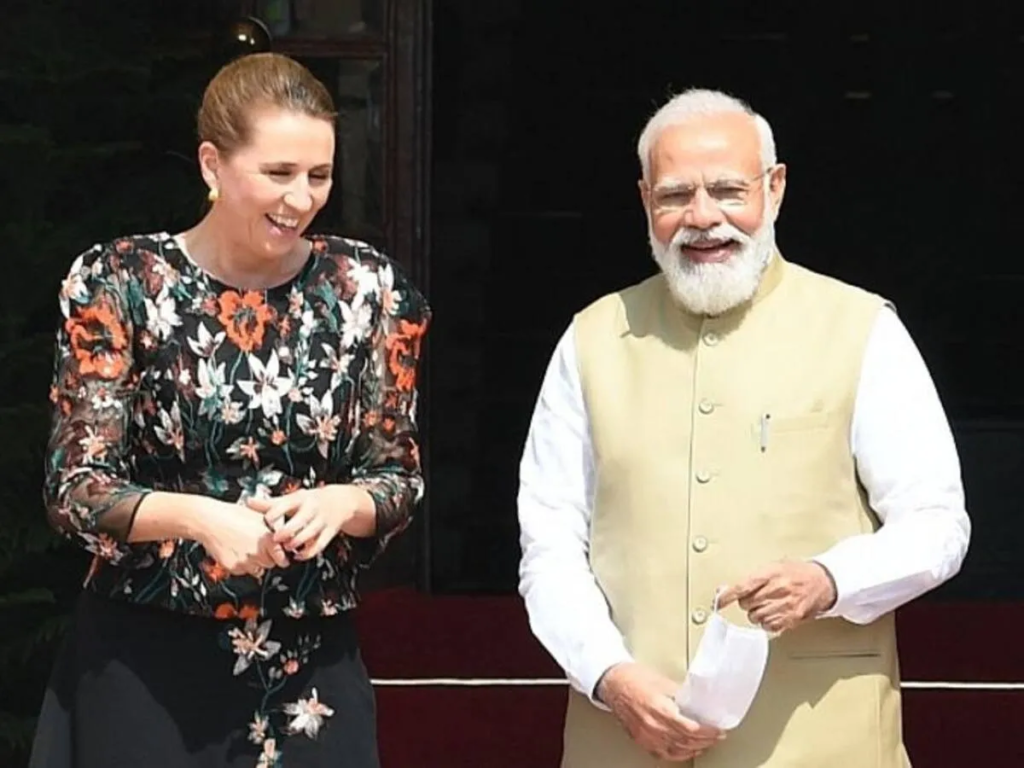
By Diksha Bharti
The past decade saw the rapid conversion of the Arctic into a hitherto unknown polar region mainly renowned for its science experiments and polar journeys but today turned into an arena for increased geostrategic competition. While ice keeps melting at a shocking rate, a new geopolitical reality is unfolding, one in which great powers are competing to extend influence over newly accessible seas, resources, and trade routes. For the United States, Japan, Canada, and European allies, the new frontier comes with opportunities for cooperation as well as the potential for confrontation. The question now is how these countries can coordinate policy in an increasingly contested environment, and what risks may deter their cooperation.
As the ice caps of the Arctic melt, losing a projected 21,000 square miles of sea ice each year, as estimated by NASA, nations have moved into what some commentators describe as a modern gold rush. Under the melting ice is a treasure trove of untapped resources and a new grid of strategic benefits. Unclaimed pieces of land and sea are becoming available, with nations exercising jurisdiction, not only for extracting resources, but also for creating essential shipping lanes. The location of the Arctic, between Eurasia and North America, provides it with tremendous strategic influence, giving it a major node to exercise global power.
Military positioning within the region is gaining pace. The United States, Russia, and China are heavily investing to secure strategic outposts and military bases along the Arctic region. Russia, for example, has had a long-standing Arctic presence and has doubled down in recent years by restarting Soviet-era military bases and increasing its icebreaker fleet.
The United States, on the other hand, is catching up, restructuring its Arctic strategy to fit the growing significance of the region. For rising powers such as China albeit geographically far away, the Arctic provides new avenues for energy security, diversification of trade, and global power.
At the center of Arctic governance is the Arctic Council, an intergovernmental organization consisting of eight member states with territorial interests in the region—Canada, Denmark, Finland, Iceland, Norway, Russia, Sweden, and the United States. The Council also has 13 observer states like China, Germany, India, and Japan.
Although the mandate of the Council emphasizes environmental protection, sustainable development, and scientific cooperation, it is not empowered to enforce and is still very much consensus-based. As the geopolitical pace accelerates, doubts are rising regarding the Council’s capacity to broker conflicts and prevent military escalation.
Canada and Russia currently hold the most expansive land claims in the Arctic, and their longstanding presence has translated into tangible influence. By contrast, observer nations, particularly China, pursue a different set of interests primarily economic and strategic rather than territorial. This divergence in motivations complicates multilateral coordination. While Arctic-bordering nations often cite geographical proximity as justification for their activities, China openly acknowledges its resource-driven interests, leading to growing suspicion among member states.
In fact, natural gas has emerged as one of the most fiercely contested spoils of this chilly conflict. With conventional reserves declining all over the world, the Arctic is seen as the last energy frontier. According to a U.S. Geological Survey estimate, the region holds about 1,699 trillion cubic feet of natural gas and other hydrocarbons, about the same as Russia’s entire reserves and triple those of the United States. Dominion over such energy resources could greatly change the complexion of international energy politics.
China has aggressively advanced to claim its economic interests in the Arctic despite its non-Arctic nature. Referring to its strategy as the “Polar Silk Road”, Beijing aims to incorporate Arctic trade routes into its larger Belt and Road Initiative. Chinese companies like Shenghe Resources, China Nuclear Hua Sheng Mining, and China National Offshore Oil Corporation have tried to increase their presence in the Arctic, especially by investing in Greenland and Russia. But these efforts have been stymied by bureaucratic challenges and political opposition, most notably from Denmark, which controls Greenland and has expressed fears of possible geopolitical consequences.
Operationally, China’s Arctic capabilities are still in their infancy. Its icebreaking fleet is composed of a single modern ship, the Xuelong 2 (Snow Dragon 2), commissioned in 2019. In contrast, the U.S. possesses five icebreakers, and Russia boasts a whopping 51, of which several are nuclear-powered. That difference in infrastructure highlights the differing levels of Arctic preparedness among the great powers. China’s investments nevertheless announce its interest in having a long-term presence in the region.
At the same time, fresh satellite imagery unveiled swift development at Qinling Station, which is situated on Inexpressible Island off the Ross Sea. Formally inaugurated early in 2024, this Chinese research station is set to have top-class satellite antennas and dual-purpose facilities, instigating fears about its capability for military use in surveillance and communications. Blurring of civilian and military purposes in such establishments is characteristic of other widespread tendencies in the Arctic towards strategic vagueness.
Russia’s presence is expansive and assertive. Russia has been following a “Red Arctic” strategy to strengthen its defense posture in the region. The 2019 Ocean Shield Exercise, which involved massive naval operations, was a show of Moscow’s ability to control Arctic waters and deter outside powers. With airbases, coastal radar systems, and a web of deep-water ports, Russia is making it clear that it views the Arctic as central to its national defense doctrine.
Against this backdrop, the threat of an Arctic arms race hovers. A 2019 report from the U.S. Department of Defense cautioned that China could be considering deploying a permanent military presence in the Arctic, a development that would fundamentally alter the strategic equation and have the potential to set off a three-way competition between the U.S., Russia, and China. The introduction of a third military presence in the Arctic increases the possibility of direct conflict, particularly as the operational closeness of enemy forces grows.
In this unstable climate, the diplomatic utility of the Arctic Council is being tested. The Council can be a stabilizing influence, if given more robust mechanisms for conflict resolution and clearer norms regarding military activity. Its unusual membership of member and observer states offers a forum for discussion that would otherwise be unachievable in the face of deepening geopolitical cleavages.
However, for the United States and its allies, there is also a pressing need to construct alternative, issue-based alliances to supplement Arctic Council initiatives. Like-minded partners like Japan, Norway, Canada, and Finland can enable collective action on climate resilience, maritime security, and technological innovation. Japan, while historically far removed from Arctic politics, has demonstrated increasing interest in the Northern Sea Route, which has the potential to significantly cut shipping times between Asia and Europe. Tokyo’s deepening involvement is a welcome chance for cooperation with Western partners on both economic and scientific terms.
In the future, the intersection of climate change, competition for resources, and military posturing will only increase the geopolitical fault lines in the Arctic. What was once a unifying symbol of international scientific cooperation risks becoming an area of contestation. The need for multilateral diplomacy has never been greater.
For Washington and its allies, traversing this ice-bound border will involve finding a balance, asserting strategic interests while fostering transparency, environmental responsibility, and cooperative security. The Arctic’s future, and the nature of 21st-century geopolitics, will hinge on whether competition and cooperation can peacefully coexist in one of the planet’s most vulnerable ecosystems.



